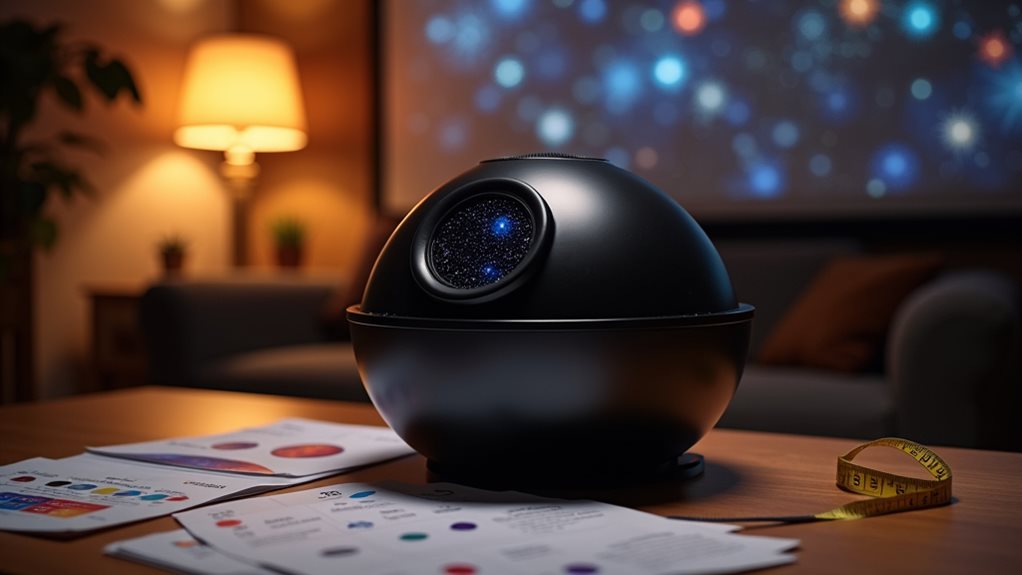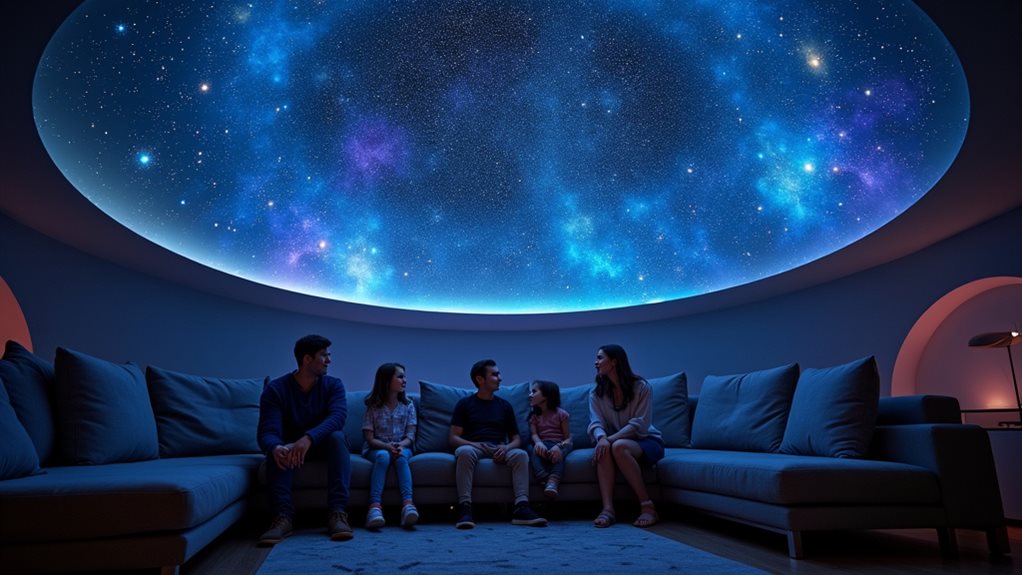When I first started reviewing star projectors there was one model in particular that people asked me about. The people asking were keen to find out more information about the Miller Engineering DS-1, an almost mythical device rarely seen in person.
I’m very fortunate that, all those years ago on approaching the company behind a device that can project 4.1 million stars, my reputation proceeded me. They’d seen videos I’d done and were keen to see what I made of the DS-1.
DS-1 Overview
If you want the most accurate, stunning, star projector then the DS-1 is the model for you…providing you’ve got the deep pockets to cover the price.

Pros
- 4.1 MILLION stars
- 10 watts LED
- Wide selection of discs
- Looks amazing
Cons
- High price
- Cooling fan audible
- Hard to get hold of outside USA
Dark Skys DS-1 Design
The first thing I noticed was how much larger the DS-1 is compared to other devices, such as the Sega Homestar.
It’s an impressive looking device, a cylindrical tube with controls on the side. The body displays a star map, so even when not in use it still looks very interesting.
On the 2019 model I have, the main body and star map can light up, acting as a night light. Newer models don’t have this feature. I recently checked in with Chris Miller on the reason for the change.
We had very few comments on the nightlight with several customers commenting that they never used it. The other reason is it added quite a bit to the cost and complexity of the projector. If we had added the nightlight it would have raised the price by about $150 and I am not sure customers would be willing to pay that additional amount. For the first run of the DS1 I doubt we made any money on it. Physically the projector looks identical and the star map on the body is the same.
Christopher Miller
I can certainly understand wanting to keep the price down, at $599.95 this isn’t exactly an impulse buy!
What you get for the price is a lovely-looking device made from Aluminium alloy, with backlit controls, a 10 watts LED and the most impressive star projection I’ve ever seen.
In use there is a slight background noise from the cooling fan. It’s also worth noting the room won’t remain pitch black, there is a fair amount of ambient light.
4.1 MILLION Stars
There are very few accurate star projectors, most just project a nice looking nebula with some lazer dots. The Sega Homestar range set the bar high when they launched with an accurate representation of 60,000 stars.
Legend has it (I expect) that upon seeing the 60,000 number Christopher Miller said “Hold my drink…”, locked himself away, and developed a disc containing 1.4 million stars. Upon seeing this disc he once again said “Hold my drink…”, locked himself away, and developed a chrome-on-glass disc that allows the DS-1 to project 4.1 million stars.
4.1 MILLION. It’s the sort of number you can’t really get your head around, but it does make a huge difference.
I struggle to capture just how good this looks on camera, it really is amazing being able to settle down and look up at a representation of the night sky very few people will ever be able to see in real life.
The bulb is powerful enough to overcome most surfaces, such as the wall paper in the video, but it will always look best when projected on a flat, white, surface.
One element I really like is the shooting star feature. As it’s a projecting a static image (although one that can be rotated at different speeds), the shooting star helps add some life to projection.
DS-1 Projection Discs
Given the high price, you’d be right to expect this to offer more than just star discs. In fact there are, at the time of writing, just over 50 different discs available, including two chrome discs.

The two chrome discs are the star view, but one has the constellations mapped on, the other doesn’t.
There are a lot to pick from, many aren’t star related. For example, you can project the US Capitol dome, or have a stormy night on your ceiling.

DS-1 vs Homestar Flux
With so few accurate star projectors available, this is usually the question that I get asked the most, which is better, the DS-1 or the Flux?
Let’s take a look at a comparison:
Which projection do I prefer? The DS-1 hands down. Which price do I prefer? The Flux, obviously! The truth is that the Flux is a very good projector and for the majority of people the lower price will be the deciding factor.
Plus, if you never see the DS-1 in person you won’t experience millions of stars, so the 60,000 will look just fine.
Final thoughts
Years later, the DS-1 still holds the top spot for most accurate projector, it is also continues to be the most expensive. If you have the money and want the very best, there’s no doubt that this is the model to go for.
In an interview with Time, Mr Miller said “We’re bringing back the night sky”. They’ve done that, and much more. Thanks to factors such as light pollution, it’s a version of the night sky unlike any other you’ve seen, and it makes you realise just how small our little planet truly is.




